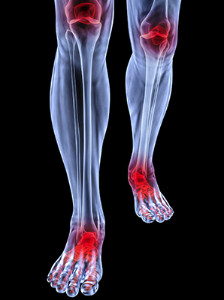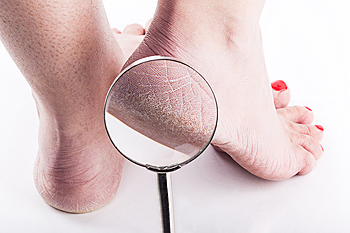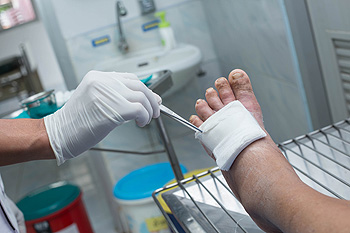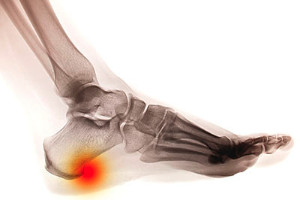 Real Madrid announced that Portuguese star Cristiano Ronaldo suffered a slight ankle sprain in the team’s 2-2 draw with Barcelona. Ronaldo suffered the injury when Barcelona defender Gerard Pique ran into him from behind on the field. Ronaldo was seen limping from the sideline and originally came back into the game after the injury, but was ultimately taken out of the game at halftime. In regards to the injury, Real Madrid manager Zinedine Zidane says, "We will see tomorrow, with the tests, and do what we need, to see how his ankle is. He is a bit worried, as the ankle is a bit swollen, but he says it is not so much."
Real Madrid announced that Portuguese star Cristiano Ronaldo suffered a slight ankle sprain in the team’s 2-2 draw with Barcelona. Ronaldo suffered the injury when Barcelona defender Gerard Pique ran into him from behind on the field. Ronaldo was seen limping from the sideline and originally came back into the game after the injury, but was ultimately taken out of the game at halftime. In regards to the injury, Real Madrid manager Zinedine Zidane says, "We will see tomorrow, with the tests, and do what we need, to see how his ankle is. He is a bit worried, as the ankle is a bit swollen, but he says it is not so much."
Although ankle sprains are common, they aren’t always minor injuries. If you need your ankle injury looked at, contact one of our podiatrists from Lovely Foot Associates, PC. Our doctors can provide the care you need to keep you pain-free and on your feet.
How Does an Ankle Sprain Occur?
Ankle sprains are the result of a tear in the ligaments within the ankle. These injuries may happen when you make a rapid shifting movement while your foot is planted. A less common way to sprain your ankle is when your ankle rolls inward while your foot turns outward.
What Are the Symptoms?
Preventing a Sprain
Treatment of a Sprain
In many cases, the RICE method (Rest, Ice, Compression, and Elevate) is used to treat ankle sprains. However, you should see a podiatrist to see which treatment option would work best with your injury. In severe cases, surgery may be required.
It is important to ask your doctor about rehab options after you receive treatment for your injury. Stretching, strength training, and balance exercises may help the ankle heal while also preventing further injury.
If you have any questions, please feel free to contact our office located in Johnstown, PA . We offer the newest diagnostic and treatment technologies for all your foot care needs.
 Recent research has shown that patients who experience obesity may often develop foot conditions such as chronic plantar fasciitis, an altered foot structure, or ailments, which may affect the overall function of the foot. The additional weight the feet must endure may disturb the shape of the arch, and in some cases, may cause the arch to disappear completely. Studies have shown there may be a link between increased obesity, and the level of pain that radiates in the heel. Additionally, chronic heel and foot pain may be a contributing factor for the lack of motivation to perform specific exercises that are necessary for effective weight loss. It’s suggested to schedule a consultation with a podiatrist for additional information about foot ailments associated with obesity.
Recent research has shown that patients who experience obesity may often develop foot conditions such as chronic plantar fasciitis, an altered foot structure, or ailments, which may affect the overall function of the foot. The additional weight the feet must endure may disturb the shape of the arch, and in some cases, may cause the arch to disappear completely. Studies have shown there may be a link between increased obesity, and the level of pain that radiates in the heel. Additionally, chronic heel and foot pain may be a contributing factor for the lack of motivation to perform specific exercises that are necessary for effective weight loss. It’s suggested to schedule a consultation with a podiatrist for additional information about foot ailments associated with obesity.
The more you weigh, the harder your feet must work to support your body. If you’re an obese individual and are concerned about your feet, contact one of our podiatrists from Lovely Foot Associates, PC. Our doctors can provide the care you need to keep you pain-free and on your feet.
Obesity and Your Feet
People who are overweight are putting more pressure on their ankles, knees, and hips as well as their feet. This unfortunately can lead to variety of different issues.
Problems & Complications Stemming from Obesity
If you have any questions, please feel free to contact our office located in Johnstown, PA . We offer the newest diagnostic and treatment technologies for all your foot care needs.
 Recent research has shown that 60% of amputations that are not related to an injury occur in diabetic patients. The percentage rises to 80% when preceded by a foot ulcer. Infections due to diabetic foot are said to be the number one cause of leg amputations. The feet and nerves may become damaged from the high glucose levels that typically occur in diabetic patients, and this may cause a condition to occur that is referred to as neuropathy. Consequently, this may cause an inability to feel minor injuries and pain, and may ultimately lead to infections or gangrene. Many diabetics have learned that education about this condition may prevent the risk of foot ulcers and amputations. Additionally, learning how to properly care for the feet may play an essential role in possibly preventing painful foot ulcers.
Recent research has shown that 60% of amputations that are not related to an injury occur in diabetic patients. The percentage rises to 80% when preceded by a foot ulcer. Infections due to diabetic foot are said to be the number one cause of leg amputations. The feet and nerves may become damaged from the high glucose levels that typically occur in diabetic patients, and this may cause a condition to occur that is referred to as neuropathy. Consequently, this may cause an inability to feel minor injuries and pain, and may ultimately lead to infections or gangrene. Many diabetics have learned that education about this condition may prevent the risk of foot ulcers and amputations. Additionally, learning how to properly care for the feet may play an essential role in possibly preventing painful foot ulcers.
Limb salvage can be an effective way in preventing the need for limb amputation. If you have diabetes, cancer, or any other condition that could lead to foot amputation if left unchecked, consult with one of our podiatrists from Lovely Foot Associates, PC. Our doctors will assess your condition and provide you with quality foot and ankle treatment.
What Is Limb Salvage?
Limb salvage is the attempt of saving a limb, such as the foot from amputation. Podiatrists also try to make sure that there is enough function in the foot after the salvage that it is still usable. Diabetes is the number one cause of non-traumatic amputations in the United States. Those with diabetes experience poor blood circulation, which prevents proper healing of an ulcer. If the ulcer is left uncheck, it could become infected, which could result in the need for amputation.
However, there are other causes as well, such as cancer and traumatic injury. Links between higher mortality rates and amputation have been found. This translates into higher healthcare costs, and a reduced quality of life and mobility for amputees. Podiatrists have attempted to increase the prevalence of limb salvage in an attempt to solve these issues.
Diagnosis and Treatment
Limb salvage teams have grown in recent years that utilize a number of different treatments to save the infected limb. This includes podiatrists that specialize in wound care, rehabilitation, orthotics, and surgery. Through a combination of these methods, limb salvage has been found to be an effective treatment for infected limbs, and as an alternative to amputation. Podiatrists will first evaluate the potential for limb salvage and determine if the limb can be saved or must be amputated.
If you have any questions, please feel free to contact our office located in Johnstown, PA . We offer the newest diagnostic and treatment technologies for all your foot care needs.
 Rheumatoid arthritis is an autoimmune condition, which causes the immune system to attack the joints. This condition is known to affect the hands, feet, and wrists. There are general symptoms to look for if you suspect that you may be suffering from rheumatoid arthritis. The most common symptom of this condition is joint pain. This pain usually presents itself as a throbbing sensation or as a constant ache in the joint. This joint pain is usually at its worst after periods of inactivity, which is why people with RA feel the majority of this type of pain in the morning. Symptoms of this condition may vary from person to person, and if you suspect that you have rheumatoid arthritis in your feet, you should speak with your podiatrist as soon as possible.
Rheumatoid arthritis is an autoimmune condition, which causes the immune system to attack the joints. This condition is known to affect the hands, feet, and wrists. There are general symptoms to look for if you suspect that you may be suffering from rheumatoid arthritis. The most common symptom of this condition is joint pain. This pain usually presents itself as a throbbing sensation or as a constant ache in the joint. This joint pain is usually at its worst after periods of inactivity, which is why people with RA feel the majority of this type of pain in the morning. Symptoms of this condition may vary from person to person, and if you suspect that you have rheumatoid arthritis in your feet, you should speak with your podiatrist as soon as possible.
Because RA affects more than just your joints, including the joints in your feet and ankles, it is important to seek early diagnosis from your podiatrist if you feel like the pain in your feet might be caused by RA. For more information, contact one of our podiatrists of Lovely Foot Associates, PC. Our doctors will assist you with all of your podiatric concerns.
What Is Rheumatoid Arthritis?
Rheumatoid Arthritis (RA) is an autoimmune disorder in which the body’s own immune system attacks the membranes surrounding the joints. Inflammation of the lining and eventually the destruction of the joint’s cartilage and bone occur, causing severe pain and immobility.
Rheumatoid Arthritis of the Feet
Although RA usually attacks multiple bones and joints throughout the entire body, almost 90 percent of cases result in pain in the foot or ankle area.
Symptoms
Diagnosis
Quick diagnosis of RA in the feet is important so that the podiatrist can treat the area effectively. Your doctor will ask you about your medical history, occupation, and lifestyle to determine the origin of the condition. Rheumatoid Factor tests help to determine if someone is affected by the disease.
If you have any questions please feel free to contact our office located in Johnstown, PA . We offer the newest diagnostic and treatment technologies for all your foot and ankle needs.
 The Royals will have to play the next few weeks without their outfielder Jorge Soler. Soler recently fractured his left first metatarsal when he tripped running out of the batter’s box during a game. The injury hasn’t been ruled severe enough to require surgery, but the Royals are expected to re-evaluate the fracture soon. Fortunately, there is a possibility that the break may heal on its own. However, if Soler’s CT scan reveals a further separation of bones, surgery may be necessary. Soler is expected to be placed on the disabled list very soon and he will most likely be out of gameplay until August. Soler’s injury will be a monumental loss for an already struggling Kansas City Royals team. If you suspect that you have a fracture in your foot, you should consult with your podiatrist right away.
The Royals will have to play the next few weeks without their outfielder Jorge Soler. Soler recently fractured his left first metatarsal when he tripped running out of the batter’s box during a game. The injury hasn’t been ruled severe enough to require surgery, but the Royals are expected to re-evaluate the fracture soon. Fortunately, there is a possibility that the break may heal on its own. However, if Soler’s CT scan reveals a further separation of bones, surgery may be necessary. Soler is expected to be placed on the disabled list very soon and he will most likely be out of gameplay until August. Soler’s injury will be a monumental loss for an already struggling Kansas City Royals team. If you suspect that you have a fracture in your foot, you should consult with your podiatrist right away.
A broken foot requires immediate medical attention and treatment. If you need your feet checked, contact one of our podiatrists from Lovely Foot Associates, PC. Our doctors can provide the care you need to keep you pain-free and on your feet.
Broken Foot Causes, Symptoms, and Treatment
A broken foot is caused by one of the bones in the foot typically breaking when bended, crushed, or stretched beyond its natural capabilities. Usually the location of the fracture indicates how the break occurred, whether it was through an object, fall, or any other type of injury.
Common Symptoms of Broken Feet:
Those that suspect they have a broken foot shoot seek urgent medical attention where a medical professional could diagnose the severity.
Treatment for broken bones varies depending on the cause, severity and location. Some will require the use of splints, casts or crutches while others could even involve surgery to repair the broken bones. Personal care includes the use of ice and keeping the foot stabilized and elevated.
If you have any questions please feel free to contact our office located in Johnstown, PA . We offer the newest diagnostic and treatment technologies for all your foot and ankle needs.
 Cracks in the skin of the heel of the foot, which are often referred to as fissures, can be painful and uncomfortable. If this condition is not treated promptly, serious infections may occur. This ailment is the result of insufficient moisture in the skin, and research has shown there may be several reasons for this to occur. Cold weather may often be a contributing factor, in addition to drinking insufficient amounts of water, poor nutrition, or not moisturizing the feet. This ailment may be more prevalent in diabetic patients or in people who stand for the majority of the day. Wearing proper footwear may prevent cracked heels from developing, and this may include choosing shoes that have a closed heel. Soaking the feet in a warm bath, followed by utilizing a good moisturizer, will not only benefit the feet but also feel good. If you are afflicted with severe fissures, please consult with a podiatrist for proper treatment options.
Cracks in the skin of the heel of the foot, which are often referred to as fissures, can be painful and uncomfortable. If this condition is not treated promptly, serious infections may occur. This ailment is the result of insufficient moisture in the skin, and research has shown there may be several reasons for this to occur. Cold weather may often be a contributing factor, in addition to drinking insufficient amounts of water, poor nutrition, or not moisturizing the feet. This ailment may be more prevalent in diabetic patients or in people who stand for the majority of the day. Wearing proper footwear may prevent cracked heels from developing, and this may include choosing shoes that have a closed heel. Soaking the feet in a warm bath, followed by utilizing a good moisturizer, will not only benefit the feet but also feel good. If you are afflicted with severe fissures, please consult with a podiatrist for proper treatment options.
Cracked heels are unsightly and can cause further damage to your shoes and feet. If you have any concerns, contact one of our podiatrists from Lovely Foot Associates, PC. Our doctors can provide the care you need to keep you pain-free and on your feet.
Cracked Heels
Cracked heels appear unappealing and can make it harder for you walk around in sandals. Aside from looking unpleasant, cracked heels can also tear stockings, socks, and wear out your shoes. There are several methods to help restore a cracked heel and prevent further damage.
How Do You Get Them?
Dry skin is the number one culprit in creating cracked heels. Many athletes, walkers, joggers, and even swimmers suffer from cracked heels. Age and skin oil production play a role to getting cracked heels as well.
Promote Healing
Over the counter medicines can help, especially for those that need instant relief or who suffer from chronic dry feet.
Wear Socks – Wearing socks with medicated creams helps lock in moisture.
Moisturizers – Applying both day and night will help alleviate dryness which causes cracking.
Pumice Stones – These exfoliate and remove dead skin, which allows for smoother moisturizer application and better absorption into the skin.
Change in Diet
Eating healthy with a well-balanced diet will give the skin a fresh and radiant look. Your body responds to the kinds of food you ingest. Omega-3 fatty acids and zinc supplements can also revitalize skin tissue.
Most importantly, seek professional help if unsure how to proceed in treating cracked heels. A podiatrist will help you with any questions or information needed.
If you have any questions, please feel free to contact our office located in Johnstown, PA . We offer the newest diagnostic and treatment technologies for all your foot care needs.
Read more about Solutions for Cracked Heels If you have diabetes, research has shown that minor cuts and scratches may take longer to heal than for non-diabetics. These types of seemingly insignificant wounds can result in serious infections if not treated promptly. One of the ways to alleviate this is to inspect the feet daily for any noticeable cuts, blisters or swelling. For patients who have diabetic neuropathy there may be a loss of feeling in the feet, and unnoticed wounds may possibly result in foot ulcers, which may ultimately lead to amputation. It’s suggested to consult with a podiatrist who can perform a process referred to as debridement, which is how dead tissue can be removed. Many podiatrists may recommend staying off the feet whenever possible in addition to wearing a boot that may help to take pressure off any wounds while walking or standing. Daily changing of any bandages on the wounds may aid in proper healing. Ingesting a healthy diet and keeping sugar levels within your target range may promote accelerated healing for foot wounds.
If you have diabetes, research has shown that minor cuts and scratches may take longer to heal than for non-diabetics. These types of seemingly insignificant wounds can result in serious infections if not treated promptly. One of the ways to alleviate this is to inspect the feet daily for any noticeable cuts, blisters or swelling. For patients who have diabetic neuropathy there may be a loss of feeling in the feet, and unnoticed wounds may possibly result in foot ulcers, which may ultimately lead to amputation. It’s suggested to consult with a podiatrist who can perform a process referred to as debridement, which is how dead tissue can be removed. Many podiatrists may recommend staying off the feet whenever possible in addition to wearing a boot that may help to take pressure off any wounds while walking or standing. Daily changing of any bandages on the wounds may aid in proper healing. Ingesting a healthy diet and keeping sugar levels within your target range may promote accelerated healing for foot wounds.
Wound care is an important part in dealing with diabetes. If you have diabetes and a foot wound or would like more information about wound care for diabetics, consult with one of our podiatrists from Lovely Foot Associates, PC. Our doctors will assess your condition and provide you with quality foot and ankle treatment.
What Is Wound Care?
Wound care is the practice of taking proper care of a wound. This can range from the smallest to the largest of wounds. While everyone can benefit from proper wound care, it is much more important for diabetics. Diabetics often suffer from poor blood circulation which causes wounds to heal much slower than they would in a non-diabetic.
What Is the Importance of Wound Care?
While it may not seem apparent with small ulcers on the foot, for diabetics, any size ulcer can become infected. Diabetics often also suffer from neuropathy, or nerve loss. This means they might not even feel when they have an ulcer on their foot. If the wound becomes severely infected, amputation may be necessary. Therefore, it is of the upmost importance to properly care for any and all foot wounds.
How to Care for Wounds
The best way to care for foot wounds is to prevent them. For diabetics, this means daily inspections of the feet for any signs of abnormalities or ulcers. It is also recommended to see a podiatrist several times a year for a foot inspection. If you do have an ulcer, run the wound under water to clear dirt from the wound; then apply antibiotic ointment to the wound and cover with a bandage. Bandages should be changed daily and keeping pressure off the wound is smart. It is advised to see a podiatrist, who can keep an eye on it.
If you have any questions, please feel free to contact our office located in Johnstown, PA . We offer the newest diagnostic and treatment technologies for all your foot care needs.
 If you have gout, it is more than likely that your diet contains more purine than what is necessary. If you fail to take action against the amount of purine in your body, your kidney function will become disrupted. Purine is a substance that, when broken down, creates uric acid, which is filtered by the kidneys. A balanced amount of uric acid will help regulate blood throughout the body by promoting healthy blood vessel linings. When there is an excessive amount of uric acid in the bloodstream, urate crystals gather in the joints, which creates a condition called gout. If you are looking to avoid developing gout, you should avoid foods that are high in purines such as animal organs, sardines, alcohol, and yeast. Foods that contain a moderate amount of purine are oatmeal, bacon, oyster, spinach, sausage, and shrimp. Foods that are low in purine are rice, pasta, tofu, peanut butter, low-fat dairy products, and green olives. Research has shown that there is an inverse relationship with uric acid levels and the amount of low-fat dairy products consumed. It is important that you carefully plan your diet if you are aiming to prevent the development of gout.
If you have gout, it is more than likely that your diet contains more purine than what is necessary. If you fail to take action against the amount of purine in your body, your kidney function will become disrupted. Purine is a substance that, when broken down, creates uric acid, which is filtered by the kidneys. A balanced amount of uric acid will help regulate blood throughout the body by promoting healthy blood vessel linings. When there is an excessive amount of uric acid in the bloodstream, urate crystals gather in the joints, which creates a condition called gout. If you are looking to avoid developing gout, you should avoid foods that are high in purines such as animal organs, sardines, alcohol, and yeast. Foods that contain a moderate amount of purine are oatmeal, bacon, oyster, spinach, sausage, and shrimp. Foods that are low in purine are rice, pasta, tofu, peanut butter, low-fat dairy products, and green olives. Research has shown that there is an inverse relationship with uric acid levels and the amount of low-fat dairy products consumed. It is important that you carefully plan your diet if you are aiming to prevent the development of gout.
Gout is a foot condition that requires certain treatment and care. If you are seeking treatment, contact one of our podiatrists from Lovely Foot Associates, PC. Our doctors will treat your foot and ankle needs.
What Is Gout?
Gout is a type of arthritis caused by a buildup of uric acid in the bloodstream. It often develops in the foot, especially the big toe area, although it can manifest in other parts of the body as well. Gout can make walking and standing very painful and is especially common in diabetics and the obese.
People typically get gout because of a poor diet. Genetic predisposition is also a factor. The children of parents who have had gout frequently have a chance of developing it themselves.
Gout can easily be identified by redness and inflammation of the big toe and the surrounding areas of the foot. Other symptoms include extreme fatigue, joint pain, and running high fevers. Sometimes corticosteroid drugs can be prescribed to treat gout, but the best way to combat this disease is to get more exercise and eat a better diet.
If you have any questions please feel free to contact our office located in Johnstown, PA . We offer the newest diagnostic and treatment technologies for all your foot and ankle needs.
Read more about Gout If you experience the pain of a heel spur, it may be mistaken for a plantar fasciitis injury. The symptoms are similar and may include tenderness and pain at the bottom of the heel, and this may cause difficulty in walking. A heel spur is identified as a bony protrusion that extends from the heel bone, and it may often represent a hook. Having an X-ray performed is generally an effective way to differentiate between the two conditions and this will allow the bony growth to be seen. Research has shown that it typically originates from a poor running or walking pattern, shoes that fit poorly, or from obesity, because the heel must endure additional pressure. Effective treatment remedies may include possibly ceasing the activity that caused this injury to occur in addition to performing proper stretching techniques that may provide moderate relief. It’s advised to consult with a podiatrist for additional information about heel spurs.
If you experience the pain of a heel spur, it may be mistaken for a plantar fasciitis injury. The symptoms are similar and may include tenderness and pain at the bottom of the heel, and this may cause difficulty in walking. A heel spur is identified as a bony protrusion that extends from the heel bone, and it may often represent a hook. Having an X-ray performed is generally an effective way to differentiate between the two conditions and this will allow the bony growth to be seen. Research has shown that it typically originates from a poor running or walking pattern, shoes that fit poorly, or from obesity, because the heel must endure additional pressure. Effective treatment remedies may include possibly ceasing the activity that caused this injury to occur in addition to performing proper stretching techniques that may provide moderate relief. It’s advised to consult with a podiatrist for additional information about heel spurs.
Heel spurs can be incredibly painful and sometimes may make you unable to participate in physical activities. To get medical care for your heel spurs, contact one of our podiatrists from Lovely Foot Associates, PC. Our doctors will do everything possible to treat your condition.
Heels Spurs
Heel spurs are formed by calcium deposits on the back of the foot where the heel is. This can also be caused by small fragments of bone breaking off one section of the foot, attaching onto the back of the foot. Heel spurs can also be bone growth on the back of the foot and may grow in the direction of the arch of the foot.
Older individuals usually suffer from heel spurs and pain sometimes intensifies with age. One of the main condition's spurs are related to is plantar fasciitis.
Pain
The pain associated with spurs is often because of weight placed on the feet. When someone is walking, their entire weight is concentrated on the feet. Bone spurs then have the tendency to affect other bones and tissues around the foot. As the pain continues, the feet will become tender and sensitive over time.
Treatments
There are many ways to treat heel spurs. If one is suffering from heel spurs in conjunction with pain, there are several methods for healing. Medication, surgery, and herbal care are some options.
If you have any questions feel free to contact our office located in Johnstown, PA . We offer the latest in diagnostic and treatment technology to meet your needs.
 A vegan woman recalls a time when she experienced what she describes as a “mysterious pain” in her right ankle. She recounts that the pain was reminiscent of a sunburn mixed with an explosion of agony. When she visited her doctor, she was able to discover that the pain and swelling she was experiencing was due to a condition called gout. Gout is a condition that is often the result of eating large amounts of red meat, shellfish, and beer. Consequently, this woman was shocked to learn the cause of her condition, because she had been living a vegan lifestyle. Her case of gout was confirmed through a blood test that revealed she had a buildup of monosodium urate monohydrate crystals in her ankle. Nevertheless, this woman made it her mission to not allow gout to take control of her life. She exercises on a daily basis, socializes with friends, and continues her job to ensure that her life is not disrupted by gout.
A vegan woman recalls a time when she experienced what she describes as a “mysterious pain” in her right ankle. She recounts that the pain was reminiscent of a sunburn mixed with an explosion of agony. When she visited her doctor, she was able to discover that the pain and swelling she was experiencing was due to a condition called gout. Gout is a condition that is often the result of eating large amounts of red meat, shellfish, and beer. Consequently, this woman was shocked to learn the cause of her condition, because she had been living a vegan lifestyle. Her case of gout was confirmed through a blood test that revealed she had a buildup of monosodium urate monohydrate crystals in her ankle. Nevertheless, this woman made it her mission to not allow gout to take control of her life. She exercises on a daily basis, socializes with friends, and continues her job to ensure that her life is not disrupted by gout.
Gout is a painful condition that can be treated. If you are seeking treatment, contact one of our podiatrists from Lovely Foot Associates, PC. Our doctors will treat your foot and ankle needs.
What Is Gout?
Gout is a form of arthritis that is characterized by sudden, severe attacks of pain, redness, and tenderness in the joints. The condition usually affects the joint at the base of the big toe. A gout attack can occur at any random time, such as the middle of the night while you are asleep.
Symptoms
Risk Factors
Prior to visiting your podiatrist to receive treatment for gout, there are a few things you should do beforehand. If you have gout you should write down your symptoms--including when they started and how often you experience them, important medical information you may have, and any questions you may have. Writing down these three things will help your podiatrist in assessing your specific situation so that he or she may provide the best route of treatment for you.
If you have any questions, please feel free to contact our office located in Johnstown, PA . We offer the newest diagnostic and treatment technologies for all your foot care needs.